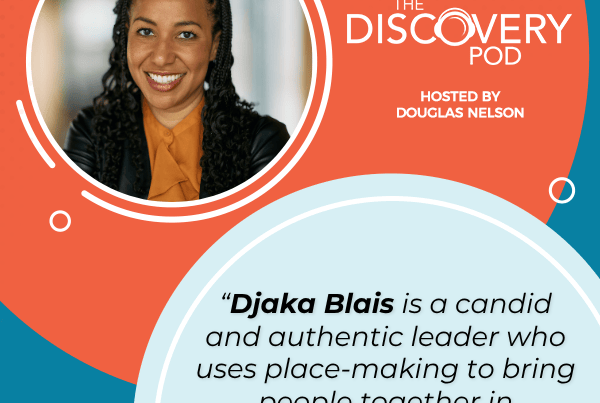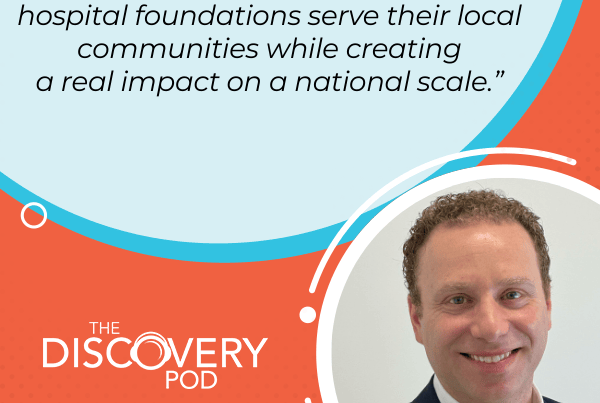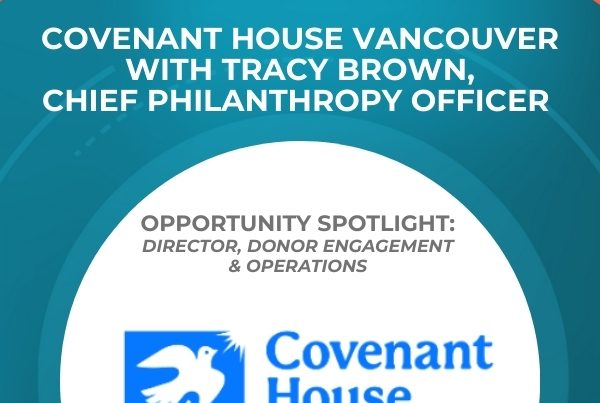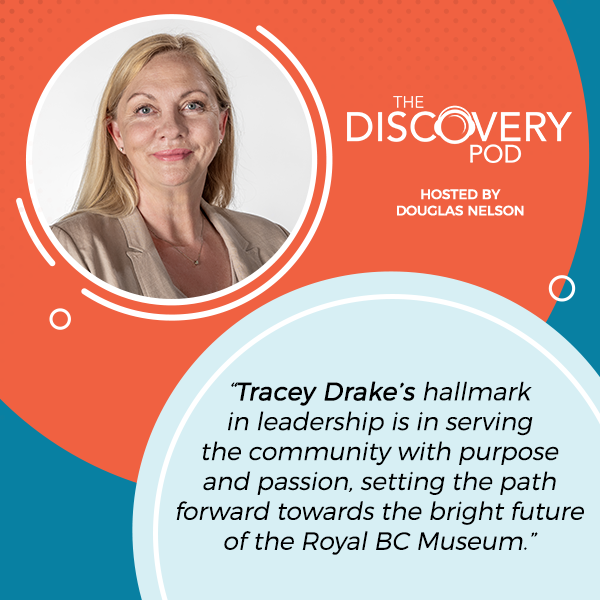
In 2022, the Royal BC Museum faced major challenges due to the cancellation of the downtown campus rebuild. It fell to Tracey Drake, the museum’s CEO, to also rebuild the trust and reputation of the museum, as well as reinvigorate its connection with the community. In this conversation with Douglas Nelson, she provides a glimpse into the life of a CEO who handles such an overwhelming task. Tracey shares her magic trick when talking to their board and team members to avoid controversies without appearing defensive. She also talks about what it is like to be a non-indigenous leader committed to reconciliation, inclusivity, and cooperation.
—
Listen to the podcast here
Royal BC Museum With Tracey Drake, Chief Executive Officer
Welcome to the show, conversations with social profit leaders. Our guest is Tracey Drake. Tracey is the CEO of the Royal BC Museum or RBCM based in Victoria, British Columbia. This episode has the number one tool I could wish for all CEOs. Tracey shares a magic trick for talking to boards and board members and members of your leadership team who are being controversial or stirring things up a little bit on how to course correct or change their pivot the conversation without appearing defensive.
If you’ve ever worried about being defensive as a leader of a team or working with their board, you’re going to want to learn this tactic that Tracey shares in our conversation. In addition, Tracey talks about what it has been like to rebuild the trust and reputation of the museum since the cancellation of the downtown campus rebuilt in 2022, how she and her colleagues have worked to build the culture and the community within the museum, and the connection and community with the rest of the province of British Columbia.
Tracey talks about what it’s like to be a non-indigenous leader who is leading and committed to reconciliation and how she and her team have approached that. Some really excellent lessons there as well. If you want a picture of what leadership under crisis and in pressure with a lot of balls in the air looks like, you’re going to want to read this conversation with Tracey Drake. Thank you for reading.
—
Welcome to the show, Tracey.
Thank you for having me, Doug.
Career Background
Tracey, I have been looking forward to this conversation for quite a while. The whole world in the social profit sector, especially, is interested in what’s been happening at the Royal BC Museum and what reconnecting with the community looks like. Before we jump into that, tell us a little bit about RBCM and the work that you and your colleagues have underway.
Thank you so much for this opportunity. Any opportunity we get to share what we do and also the work ahead is really a grateful moment for me. Thank you. I think most people know that the Royal BC Museum is the provincial museum for the province of British Columbia. We’re also the provincial archives and we’re home to IMAX Victoria, which is a going concern. It is one of the oldest continually operating museums in Canada, which I think is just a phenomenal piece of information for those who are reading. We are certainly a cultural center, a cultural center for learning and research.
Truly, one of our goals is to broaden our understanding of British Columbia as a province. We do that through our collections, exhibits, outreach and learning, and also through community engagement that we have been undertaking over the last few years. If I may as well, I would just like to say that we are located on the traditional territories of the Lekwungen-speaking people, so that’s known nowadays as the Songhees and Esquimalt nations, and I’m really grateful for the relationships that we have built with those nations and the work that we are doing in collaboration.
The RBCM is not only one of the oldest continually operating museums in Canada, but it also has one of the broadest mandates of certainly of any provincial museum in Canada. We’ll talk about what’s happened and what you’ve been doing since 2022 in just a moment, but maybe talk a little bit about that tremendous breadth of the organization and the implications it has for transitioning from maybe an old way of doing it to the new way of doing things that you and your colleagues have been doing.
I look at our mandate as an opportunity and as staggering as it is and as broad as it is in terms of its scope, I think there is tremendous opportunity there in the work we do and it helps us to frame what that work looks like and how we move forward. You are not wrong. Our mandate covers many things. For example, the work that we’re going to do in reparation with indigenous communities in British Columbia is very important and heavy lifting that this museum has been tasked with doing.
Within that comes the work and the long overdue work, if I may say, in terms of reconciliation. What are we doing in regard to decolonization? How are we looking at repatriation and the work we need to do to ensure that belongings are returned back to communities? The Chinese Canadian Museum is also part of our mandate and our requirement to support them through the work we do and through the collaborative processes that we do in terms of exhibitions and support. We’re tasked or mandated with delivering sustainable and interesting exhibitions and programs.
What I think is interesting is that British Columbians often see us as a tourist destination and we truly, that is one of the hats that we wear, but we wear many hats. Thinking about the tourism sector piece, which is really critical to where we’re located in Victoria, but then looking at how do we diversify and how do we truly become the work that I am very interested in doing and how we truly become a museum for all British Columbians across the diversity, across the province. Looking at some of the smaller communities within British Columbia and how do we reach them in a way using modern technology that will help us with the third part of our mandate and that is to be fiscally sound.
Becoming CEO
I think many of our readers will know or will google as soon as they hear this conversation. 2022 was a challenging year for the museum. The announcement of the construction of the museum that was then rescinded by the current premier or the premier at the time. That sent shockwaves across the province and through the museum. Since then, you’ve moved into the CEO role, and subsequent to that, you have been rebuilding the leadership team and reorienting the museum. Take us back to those first days as you were first the interim CEO and now the permanent CEO. What was that like as you’re trying to reframe and hold onto what the museum represents?
Any opportunity I get to reflect is always a good one. It has been a while for me in this role. First is the acting and then the term CEO. I am so grateful for this work and truly some days, I have to tell myself that I’m here for the good work. 2022 was indeed a challenging year for this organization. It saw May 13th, which happened to be Friday the 13th, where we were awarded $780 million in support of a new museum here at the downtown site in Victoria.
On June 22nd, after much backlash, quite frankly, from British Columbians, then Premier Horgan canceled the project. A couple of things. One is we didn’t have a Plan B. We did not have a Plan B. The plan had always been that the two facilities were going to be built in parallel. We didn’t have a Plan B in terms of, “Now the museum’s not closing, now what?” That’s a challenge. Within that challenge is also this extraordinary opportunity to look at how do we do this work differently. How do we look at community as an integral part of the work we do?
Museums historically have been quite insular. They have been quite fragmented in their approach and the co-creation is a very new concept for museums and cultural communities, not just in Canada but across the globe. We think about how we do that work through the lens of DRIPA, which is the Declaration of the Rights of Indigenous Peoples, and the action plan attached to that, and looking at truth and reconciliation and the calls to action that came through that commission report. It’s some pretty significant work.
Thinking about that lens and then the opportunity, truly an opportunity that we were given in 2022 to do things differently, not put it on hold, not pause it. Continue with the Park Campus Project, which I’m sure we can talk about in a moment. Look at the museum as a whole in the totality of the work we do and how do we do this work now. It’s been extraordinary. It’s been challenging. It has been very challenging, but I think it’s also been extremely rewarding in terms of where we’ve come from since 2022.
How we have addressed public sentiment about this very critical provincial institution and people are starting to see that there are many facets to this organization and we are here certainly and the team is here to do this good work. I was going to say that it’s important for people to understand what we mean when we say the provincial collections. It is really critical to note that the collections belong to the people of British Columbia. They are a provincial holding, and we are simply the stewards of those collections.
Community
I have seen, having had the chance to work with you and your colleagues a little bit, that real commitment to coming up with or setting that path forward for the museum. One of the things that really comes out to me, and I think really is a hallmark of your leadership, is that you focus on community.
I think that defining the social profit sector and working with CEOs across the country and in the community means so many different things. It means something very different to a university president than it does to the head of a large social service agency and certainly the CEO of a major cultural institution. Tracey, what does community mean for you at RBCM?
It means many things. One of the things that struck me just as you began to ask that question was when I came into this role, one of the things I immediately became aware of was that one of the jobs I was being tasked to do was hurry up and get it right. We needed to get off the front page of the paper. We needed to readdress and certainly address our relationship with the people of British Columbia and really address things like DRIPA and TRC and also, as you know, the report to British Columbians in regards to some of the systemic issues that occurred in this organization leading up to that 2021 report.
When I think about that term, hurry up and get it right, it’s not me and it’s not my leadership style because the first thing I wanted to do was learn and understand and really lean into where are the significant issues but also opportunities and how can we learn from them and move forward. There were a couple of things. First of all, for 2024, internally, the team and I adopted a guiding principle. That guiding principle was learning to listen and listening to learn. I believe that to my core. I’m always listening to see what I can understand. Did I get it right?
What can I understand from what you’re telling me or sometimes it’s even not what you’re not telling me? That’s been a really important piece of the work that we’ve been doing, and we’ve also been beginning to evolve that conversation into two different things. One would be there needs to be a certain amount of unlearning as well, especially when it comes to reconciliation and decolonization. As a group, we’re really starting to understand how we do that work.
The other piece for the community is if we’re truly going to do this work in collaboration with the community, and if we’re going to honor the self-determination articles of DRIPA, and we are going to be a community-led organization, then we need to put community first. I know you’ve heard me say this, and I certainly say this a lot: that as an organization, we truly are moving at the speed of community and trust. That doesn’t mean that we’re not doing the work because I think my time here has spoken for how much work we have accomplished.
To me, it’s that balance of how do we do this work co-created with the community and still meet our mandates and still ensure that the work moves forward. For example, here is the capital project that we’re building in Colwood. That needs to move forward. Community is everything to a museum. In fact, a museum that’s not grounded in community needs to rethink how they see their work and who they serve in that work.
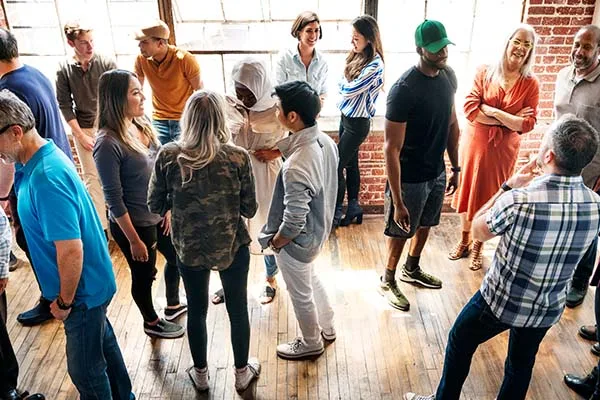
Royal BC Museum: Community is everything to a museum. It needs to rethink how they see their work and who they serve.
Dealing With Change
I think that is a great multi-pronged definition of what community is, and I know it can be challenging to move forward on all of those fronts and all of those meanings and implications of community within the museum. One of the observations that I’ve shared on this show and talked about fairly regularly is that the world outside of our organizations, outside of the social profit sector, is changing much more quickly than the inside of many of the organizations that make up the sector.
Change inside an organization, one of the oldest cultural institutions in Canada, for example, can be challenging and slow. When you came into the CEO’s chair, you had an urgent call for change from the outside community, and different voices were saying you should change in a different direction. You had to sort through all of that. There were also voices within the organization who had a different direction in mind, perhaps. As a leader, how did you balance the desire for a pace of change that was quick on one hand, mostly externally, and slow or more deliberate or even resistant that you may have encountered inside?
That is fascinating, just in terms of how you take ideas and turn them into functional applications, because that’s exactly what happened. There was a push and pull between the external and the internal. Internally, I had a team that was reeling, in fact, from 2022.
Understandably.
Also just, traditionally, museums often have significant issues with resourcing and capacity. We were so busy getting ready for the move and then we had to pivot. For example, we had no exhibitions planned beyond our expected closure date, which would have been September 2022. Getting the team refocused on the work that was to be done was challenging, but it was also a lot of fun. I mean, I saw a team that was re-energized by few and was not going to be closed for the next year, eight years, and we definitely get to do the work that we are passionate about, and that is the work of a museum.
I think that was quite interesting. There are a couple of things that happen in that push and pull from external and internal. I kept the team focused on our collective vision. What is our purpose here? What are we here to do? How do we get it done? Sometimes, there is a need to drown out the chaos and to drown out the voices because we have a lot of shareholders, as you can imagine, not just a provincial institution but a crown corporation within the provincial government as well.
The key and, if anything, I learned when I joined this organization in late 2021 and leading into 2022 was communication is everything. How you share that information, how you listen and absorb information, and how you support a team through what I believe is service leadership and how you lead in that way. It takes a lot of patience, a lot of cheerleading, and a lot of juggling of balls. Many balls. It’s not just me juggling those balls. As a team, we are looking at all respects and all aspects of this organization.
Leadership Approach
You mentioned cheerleading, but there are other ways to characterize that role. Your shareholders and the provincial government feel like things are on the right track. There’s your commitment to reconnecting with indigenous communities and the broader British Columbia community. There’s also the connection that needs to happen inside the organization. We talked about internal push and pull.
One of the things I’ve seen that has been remarkable is how you’ve created that sense of connectivity in your leadership team to be able to speak with a single voice whenever it was necessary to communicate that reassurance that things were on the right track. As a new CEO, you were on the leadership team and then ascended to be the CEO, and you have largely rebuilt that team. How have you characterized or how do you bring people together around that leadership table to create that sense of team and unity?
I guess for me, it sums up to three words and my leadership team hears this from me all the time and that is to be clear, be consistent, and be kind. I believe there is kindness in clarity and consistency as well, ensuring that everyone is working towards the same goals and the same work. If you think about Park Campus and moving seven million objects to a new facility and having a museum open at the same time, the parallel push and pull there internally is significant. Ensuring clarity is really important.
I speak to the staff every month. I’m fairly open with them without burdening them because I’m also often conscious of that, but I share with them where we are. Where are we in our journey and where may we have issues looking forward? Also, I don’t think I can state enough that if you really dig in and look at where you can go, what I find is that there are more opportunities than issues. For me, an issue represents an opportunity to look at it in a different way.
An issue represents an opportunity to look at something in a different way. You learn how to do it differently, what best serves the organization, and how it serves the people. Share on XHow can we do this differently so it best serves the organization? How can we do it differently so it serves the good people who work here as well? We have a staff of almost 200 plus another almost 200 volunteers. We’re a big organization. To your point about our shareholders, specifically the government, that relationship has needed a lot of attention and it was not through any fault of the government.
It was an internal upset. I’ve been working really hard on that and there’s the opportunity. I am so thrilled and I’m in such a good place just in terms of how well that relationship has helped us define who we are as an organization. Where do we need support, whether it’s financial or otherwise? Oftentimes, a great relationship can solve most problems as far as I’m concerned.
It is building that trust and moving at the speed of your partner, in that case, or community more broadly. One of the hallmarks of leadership in our sector that I think doesn’t get enough attention is that there is an element of fortune and destiny when people come into these CEO roles, that right person, right time, and right place counts an awful lot.
Defensive Mode
It counts for an awful lot. I want to plant that seed in that the next thought is one of the number one questions that I get in working with CEOs, and then we hear from my colleagues here from their work often CEOs wanting to avoid sounding defensive, both with their team and especially with their board. I think that is one of the number one elements of self-awareness that many organizational leaders have if the board, not your board, another general board, asks a question that isn’t particularly sharp or well-founded, and then you say, “No, that’s not how it is.”
Now you’re on your back foot because you can sound defensive. One of the things that’s been really remarkable for me watching you work with your board and with your leadership team has been the utter absence of defensiveness. An issue is an opportunity, as you just said, but just not showing up with your shoulders bunched and really being able to have the conversation with the same consistency and the same tone of voice throughout. How did you learn that skill to not be defensive, and how do you stay out of that positioning, which is the trap for so many CEOs?
It’s interesting. When I think about how I acquired that skill, I think a big part of it came from my parents and how I was raised and that need and I was taught to be curious, open, and fair. Secondly, I think it was raising my children because through that process of child-rearing, I do have a child, a well-grown child now, but who had ADHD and so it required a different skill set just in terms of how do we learn together. How do we do this work together, mom and son?
There were a couple of things to me that I think really came into play in terms of how it seeped into my career and the way that I lead. I think about leadership, and I think about doing it without ego and with absolute humility. I think humility is one of the best ways that you can respect another person and come into a conversation. You should not always know, but always be willing to open up, listen, and be part of the conversation. In terms of my shareholders here, I really rely on a couple of things. One is being engaged and providing information, and it’s not about defensiveness. It’s about I hear you.
Humility is one of the best ways to respect another person. Be always open and willing to listen when you are part of a conversation. Share on XHere is where we are with that piece of work, or here’s how I can share what we are doing. That’s the piece, educating, engaging. I know I keep going back to the word opportunity, but it tends to live in me in a very big way. Lots of people will say to me I am very optimistic all of the time. That’s not true. I wish that was true, but what I do know is that there isn’t anything truly that as an organization, and I’ve learned this very deeply over my time in this role, that we cannot overcome. It’s just the intention.
There always needs to be intention. As I said, there needs to be that clarity and that kindness. The clarity is really critical. I know where I want to take this organization, and I’m very steadfast in my ideas and plans. I sit and listen with the team and say, “If we did this, how would that affect your world, your department, your portfolio?” Really having those discussions. Same with our community partners.
One of the things that I was most concerned about coming into this role, if I’m being completely honest, was that I didn’t have a lot of direct experience working with First Nations. What I said to my board chair in the beginning was, I am going to lean into this, and I am going to use every opportunity to learn, to get to know, to understand, and to do my research. That’s what I’ve done. I’ve committed to that. I have truly leaned into those conversations, always with humility and curiosity at my forefront to listen and learn.
Thank you for sharing that. I do want to just share with our readers something that I heard you say that I thought acted as a magic wand for all CEOs. I want to get it out into the world. The details of the conversation are immaterial and will rest in the minutes, the board minutes there at the museum. A board member raised a point that was not exactly on the topic being raised and was fairly sharp in its direction and tone. It was directed at you.
You took a half breath and said, “That’s interesting. That’s not how I’ve approached this issue or thought much about it. Would it be helpful if I shared my perspective?” You waited for them to say yes. It gave you time to collect your thoughts, it allowed the rest of the board to come to your side of the table and like it wasn’t defensive, you didn’t say, “That’s crazy, what are you talking about. I hadn’t thought of it that way. Would it be helpful if I shared my perspective and how I’ve been thinking about this?”
It became about the thoughtful way you’d been approaching that particular issue, and the conversation continued. It was a trap where many CEOs, and I’ll put myself when I was a CEO in the category. I would have been very likely to fall into the trap of being defensive. You just completely diffused it. It was really remarkable. That is a trick, a tactic, a style, really, because it was authentic to you that other CEOs could learn a lot from in conversations with their board.
Thank you. I appreciate that you noticed that. Two things I would say about that. One is I am often, and people will say this, what may be considered as slow to say yes right away, because I’m very much a give me five seconds to take a breath, think about it. Where’s the impact? What have we thought about? I use that in my conversations as well. Even in my personal life, just taking a moment to catch your breath, try to consider what the other person is asking, what their concern is, or where they are misunderstood in their assumptions, and using that as the pivot point to share where you go from there. I’m a catalyst for connection, as you know.
There you got the phrase in, there you go. Catalyst for connection. It really was, in terms of the issue of defensiveness, the best example that I’ve seen. You didn’t call out the board member, the person didn’t lose any face and didn’t lose standing with their colleagues for how they’d approached the issue, but the conversation happened on a different plane than the board member had introduced. It was really exceptional work to see. I didn’t just bring that up to compliment you.
PARC Campus
I really wanted to make sure that our readers got to hear that and it’s something as a tool that they might integrate into their own toolbox and conversations with board members. There’s so much that we could cover. You’ve mentioned it a couple of times. I think it’s important to get on the table. Not only have you been focusing on reconnecting, rebuilding, and renovating an all but the capital sense, but you’ve also been building the $270 million park campus. Tell our readers a little bit about what that is and how that’s factored into all of the other things, all of the balls you’ve talked about, you’ve got in the air at the museum.
PARC campus, which stands for Provincial Archives Research and Collection, will be our secondary campus or our second facility out in Colwood, in the Royal Bay area of Colwood, BC, which is a lovely area. It’s just outside the City of Victoria. Within that facility, it will be completed. We’re supposed to get substantial completion. When we get the keys by the end of 2025, we’ll start moving in and will probably be open to the public in mid-2026. It’ll take us probably 6 to 8 months to get things moved in and put away.
The majority of the provincial collections will move to this new building. The tower that the collections are held in right now, which is on the main campus in downtown Victoria, is definitely a building with seismic issues, and there was always a need to move the collections. They will move to the new building archives. BC Archives will also move out to Colwood, which will be their home moving forward as well. The cool thing about this building is that it has this public spine. I call it a window to the collections and a window to the world.
For those who don’t know, generally speaking, a museum shows or exhibits less than 1% of its collection at any time. That is because we have seven million plus objects and belonging specimens, not to mention millions of significant government documents, photographic and audio and video collections, artwork, and then our extensive library of publications. It is a massive amount of property. Imagine, though, if people can walk in and just come in off the street and be able to see what Dr. Victoria Arbor is working on. She is our curator of paleontology.

The exhibits in the Royal BC Museum only feature less than 1% of their entire collection, which consists of more than seven million objects, specimens, government documents, and artworks.
She’s been all over the news, her and her colleagues, because they just went up to the Spatsizi Plateau in BC and brought back some significant new dinosaur fossils. Really exciting. As she moves out to Park Campus, you could look into the windows of her labs and see what they’re working on. Same with, depending on what if you have a thing for bugs or you like the wet collections, I mean, there are lots of things that will be there, the botany collection, the history collections. People will be able to interact more fully and more deeply with the collections as well.
Of course, the archives will be there. There will be public space, gardens, and grounds, and there will be an Indigenous circle for a ceremony that will be on the site as well. As well as 6 pieces, 5 plus the wall pieces of really interesting art that are created by BC artists, some of which are Indigenous. I’m really just excited about how we do this work in a different way. It’s a state-of-the-art facility. It’s a once-in-a-lifetime opportunity for the Royal BC Museum and Archives.
Thank you for sharing that. It is remarkable. As you’re talking about that, I’m just thinking, what would you be doing if you were building the new downtown campus and the park campus at the same time? Is that possible?
I think, in retrospect, it would have been an impossible feat to be building two massive buildings in parallel at the same time. This allows us the opportunity to do what we do best and that is a provincial museum and building this new park campus facility, which I’m really excited about and it’s beautiful. It’s made with BC mass timber. It has these pieces that we call rammed earth walls and the earth that was used to build these walls is indigenous earth to the region. It’s been very, very thoughtfully designed and laid out. I’m very excited to share it with British Columbians.
Looking Forward
I look forward to that. As we come to the end of our conversation, I’m going to end with the question I end all of our conversations with here on the show. Tracey, what are you looking forward to?
That’s a big question. I think I can probably say there are three things that I’m significantly looking forward to. One is I’m looking forward to the work we’re going to do at Park Campus. I’m looking forward to having a finished building because it’s quite a strain on the team. Having that and then also having it available for the people of BC. I’m looking forward to finishing public engagement with the province of BC in January 2025 so we can start to think about what the downtown building looks like and what the people of British Columbia truly want to see in their provincial museum.
I’m really looking forward to the work of reconciliation and how we do that work both internally and across the province. I think it’s significant work. I think reconciliation means a lot of things to a lot of people. I think on a lot of levels, we still have a significant amount of work to do. I told someone the other day that if we were climbing Mount Everest, we’d still be very deep in the foothills. I look forward to the challenge of that work ahead.
Episode Wrap-up
That’s great. Thank you for sharing that, Tracey, and for your wisdom and insight. Few leaders have had the opportunities that you’ve had and few will have the opportunities you will have. I look forward to watching as you and your colleagues reconnect, rebuild, and renew the RVCM.
Thank you so much for having me. It’s a pleasure.
Important Links
About Tracey Drake
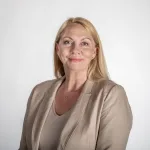
With a passion for strategic planning, transformation management and team leadership, I have more than two decades of experience as a hands-on business leader, strategic initiatives specialist and change management champion.

